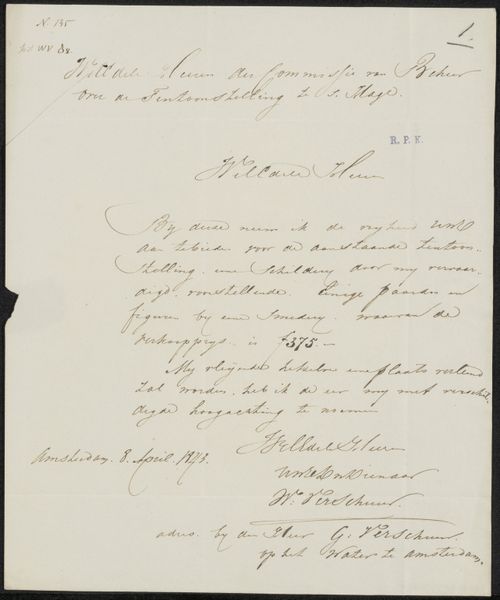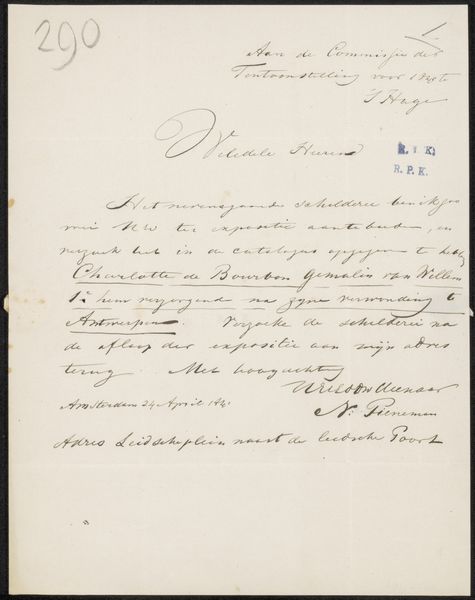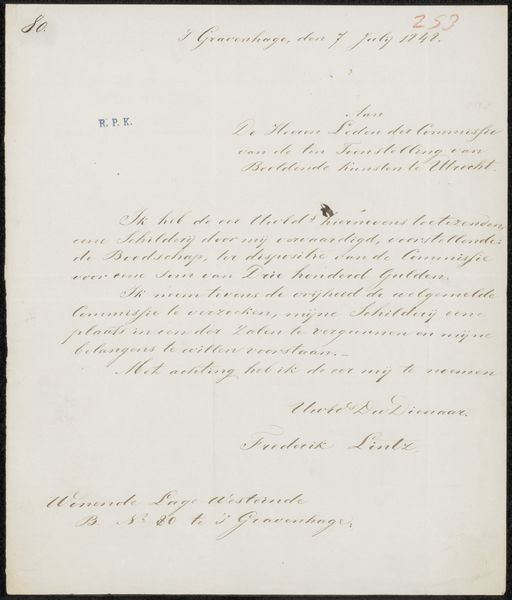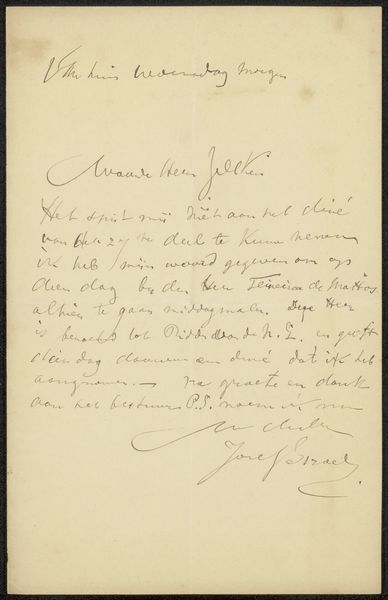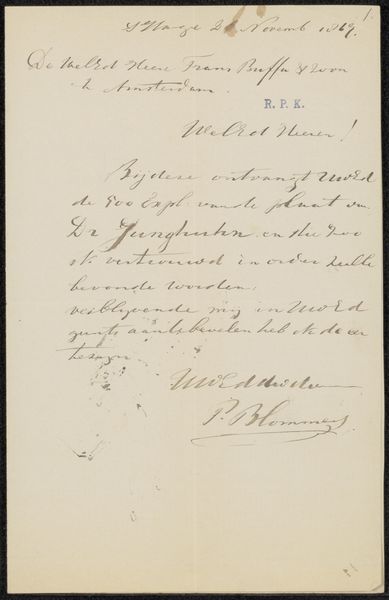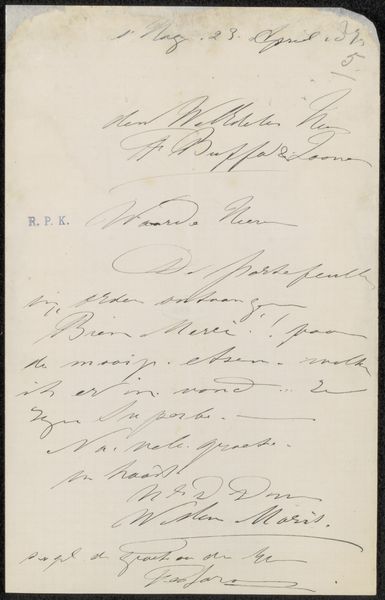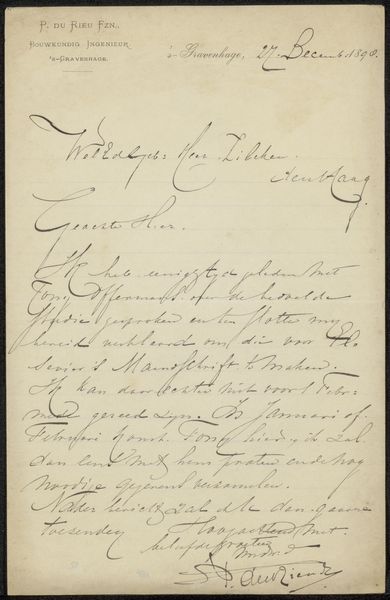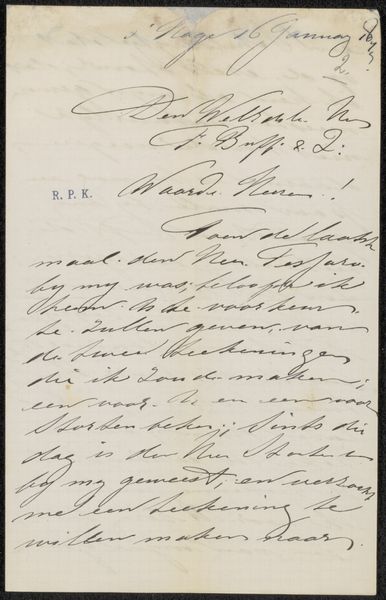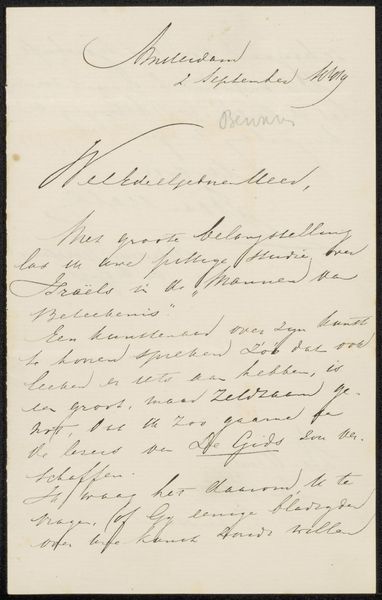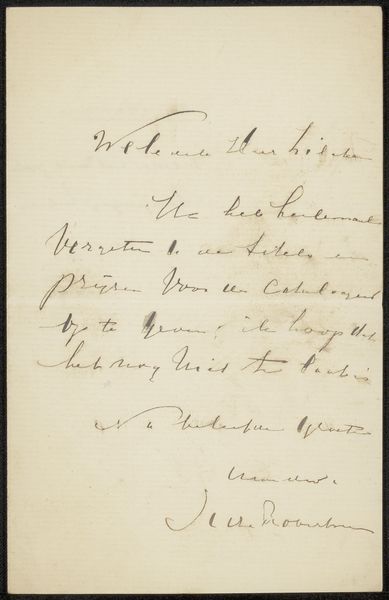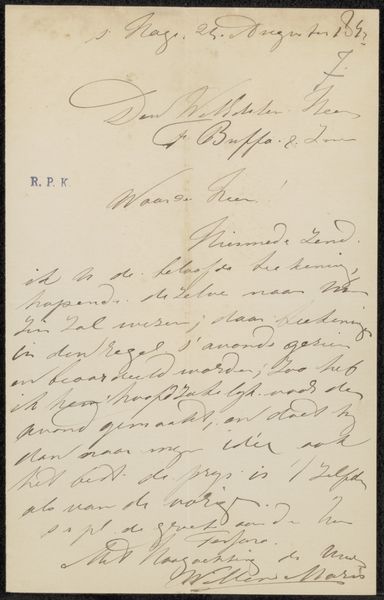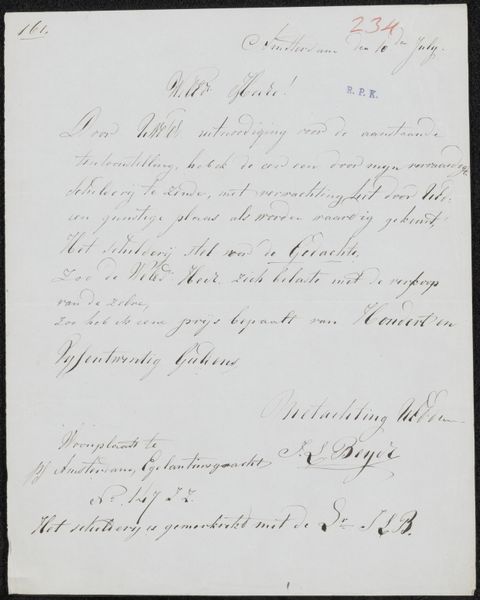
drawing, paper, ink, pen
#
drawing
#
hand-lettering
#
dutch-golden-age
#
old engraving style
#
hand drawn type
#
hand lettering
#
paper
#
personal sketchbook
#
ink
#
hand-drawn typeface
#
ink drawing experimentation
#
pen-ink sketch
#
pen work
#
sketchbook drawing
#
pen
#
calligraphy
Copyright: Rijks Museum: Open Domain
Curator: Here we have a letter, entitled "Brief aan August Allebé", a work attributed to Jos. Raemaekers, possibly created sometime between 1890 and 1899. It's an ink drawing on paper, showcasing remarkable calligraphic skill. Editor: It's like peeking into someone's beautiful, slightly frantic thoughts. The ink dances across the page, and although I can’t decipher the old script, it feels intensely personal. The tight script gives an almost architectural structure, yet there is the impression it has movement. I feel the rhythm in the upstrokes. Curator: Precisely. Raemaekers, though often recognized for his later, politically charged cartoons, clearly had a profound understanding of typography and script. Examining the cultural context, letters at the time were very different from what they are today and so can almost be thought of as little artistic productions and snapshots of interpersonal connection. The care in how he has drawn this letter has a grace and presence which has unfortunately gone out of fashion. Editor: Do you think this was more about function or flair? Is the function subservient to the composition or vice versa? Curator: Well, there seems to have been a tradition amongst Golden Age Dutch artists to embed the act of correspondence within a certain aesthetic sensibility—to transform a functional missive into a carefully crafted piece. The beautiful ornamental features framing his name and company at the top really gives it an extra dimension. However, that doesn’t negate from how communicative it is at all, given what he is actually communicating to the audience. Editor: Yes, that's an interesting way of putting it! While art now is viewed as its own enterprise to stand on its own two feet, these objects had other utilitarian aims. That being said, whether the image is a sketch or not, this makes the image very approachable – it’s easy to project emotion onto the act of writing, as though it has something profound to tell you specifically, or an urge it feels important to scratch, like now for me! Curator: Indeed. And this piece reminds us that, prior to the dominance of mechanical reproduction, handwriting was not merely utilitarian—it was, in and of itself, a powerful form of creative expression. Editor: And a gentle reminder of a slower time. Curator: It’s food for thought for sure.
Comments
No comments
Be the first to comment and join the conversation on the ultimate creative platform.
